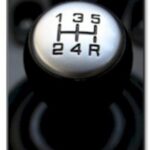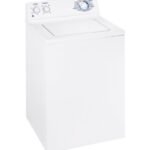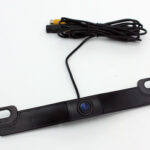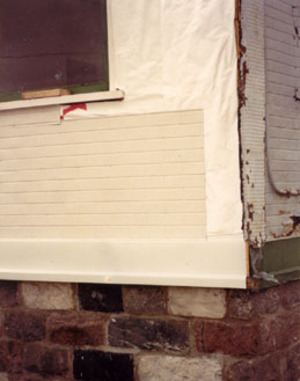Although the Nikon D200 comes with a handful of very handy presets for white balance, it may be necessary for you to set the white balance yourself. Finding the correct white balance (sometimes also called gray balance or neutral balance) is important if you want your camera to produce images the visually correct. In this article I will briefly touch on each setting for your Nikon D200, and what situation it is appropriate for. Selecting a White Balance Setting
Initially when you power up your Nikon D200 the camera is set to Auto White Balance, AWB. While this setting will work in most general situations, making adjustments based on camera pre-settings, it can sometimes cause issues such as incorrectly balancing and inconsistent balancing for multiple shots. Being a wholesale product photographer, this was a problem that I encountered with the AWB. Your lighting conditions will yield different white balances due to the color temperature of the lighting conditions. Fortunately the folks at Nikon put in nine different settings for the white balance white you can choose from.
In order to cycle through these make sure your D200 is powered up and press and hold the WB button on the left-hand side of the camera. While keeping the WB button depressed use the dial located at the top right-hand side of your camera to cycle through each setting.
In the following sections I will provide the name of each respective setting, a very brief description of it, and when it is appropriate to use it. If you have access to it, there is a hand table of these descriptions, and color temperatures in your Nikon D200 manual that came with your camera. The table is located on page 35 and can also be found online at Nikon’s Web Site.
Auto
The Auto White Balance, or AWB, is the white balance setting the comes set as the default on your Nikon D200. The approximate color temperature for this setting is between 3,500 and 8,000 K. This setting is a good choice for most shooting conditions, especially when the photographer plans to work on the image in a photo editing suite, such as Adobe Photoshop.
Incandescent
This is the next setting on your camera. It is illustrated by a small light bulb. The Approximate color temperature for this setting is roughly 3,000 K. This setting is best suited for most indoor lighting that isn’t fluorescent. Instances of this would be in homes or buildings that use standard light bulbs.
Fluorescent
The fluorescent setting on your camera is illustrated by a small fluorescent light tube with light rays coming off of it. This setting has an approximate color temperature of 4,200 K, and is appropriate to use indoors with fluorescent lights. Uses include in offices, in homes, or at some indoor sporting events. Some homes are now equipped with compact fluorescent bulbs as well.
Dir. Sunlight
This setting is illustrated with a small image of the sun. It has an approximate color temperature of 5,200 K. This setting is ideal for outdoor shooting where subjects are lit in full sunlight.Flash
The standard flash icon, which looks similar to a small lighting bolt with an arrow on the end, represents this setting. It has an approximate color temperature of 5,400 K. Use this setting when using the built-in flash unit or additional Nikon flash units, either in studio or outside of studio.Cloudy
The cloudy setting has an icon of a small cloud and a color temperature of 6,000 K. This setting is for daylight shooting with overcast, cloudy skies.
Shade
This setting is symbolized by a small house with shade coming off of the side of it. The approximate color temperature for this setting is 8,000 K. It is ideal for shooting outdoors, in full sunlight, when the subject is in the shade.
Choose Color Temperature
This is an advanced setting symbolized by a small K. This setting works in conjunction with 31 predetermined values in your Nikon D200. This is a trial and error setting for most people. You will have to take a test shot with each setting until you find the one that is appropriate for your shooting conditions.
White Balance Preset
This is the final setting on your D200 which is symbolized by the letters “PRE.” Your camera comes with four empty preset slots so that you can record and save 4 of your own white balance settings. To use this setting you will need a white or gray card to take a white balance meter.
To do this first place the white or gray card in your lighting. Then rotate your WB setting to the “PRE” setting. Get close enough to the white or gray card so that all you see in the viewfinder is white or gray. It is important to not have any other colors in the shot or else you won’t get an accurate reading. Do not worry if the card is not in focus, the camera is not taking a picture, just a metering of the color temperature. Once you have “PRE” selected, release the WB button and then press and hold it until the “PRE” begins to flash. Release the WB button and then press the shutter release button as though you were taking a picture. After shutter opens and closes you will either see “Good” or “No Gd” on the top display of the camera to indicate whether or not the metering was successful. You have now created a white balance preset on your Nikon D200.
Sometimes it can take a little adjusting to reach the correct white balance setting. Sometimes a neutral gray card is necessary depending on the intensity of the lighting you are using.
Keep in mind that if you are using the “RAW” setting for image quality on the camera, the camera will not use a white balance setting, but instead export the image exactly as it is recorded on the image sensor without any processing.
Sources:
Nikon D200 Camera Manual White Balance Chart p. 35.





